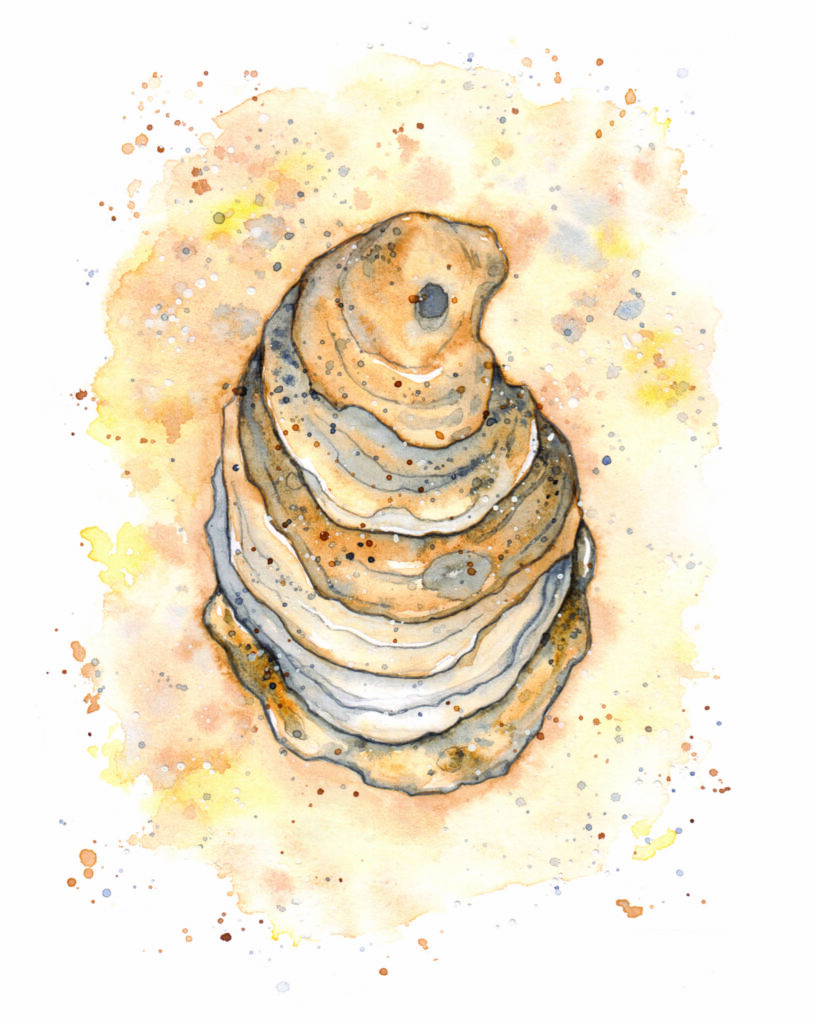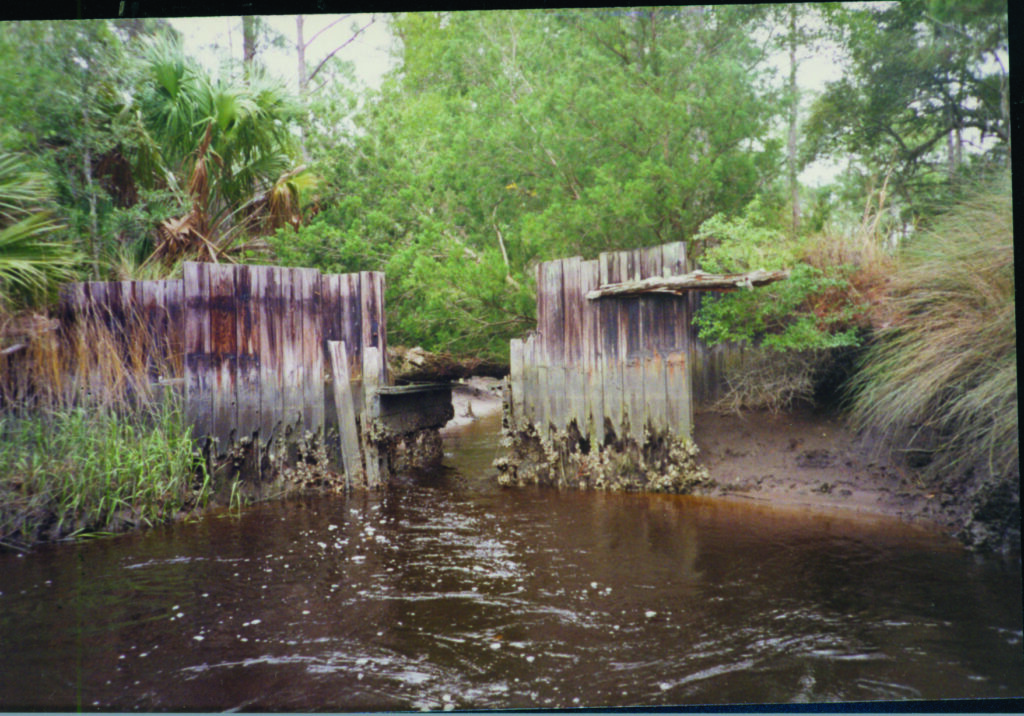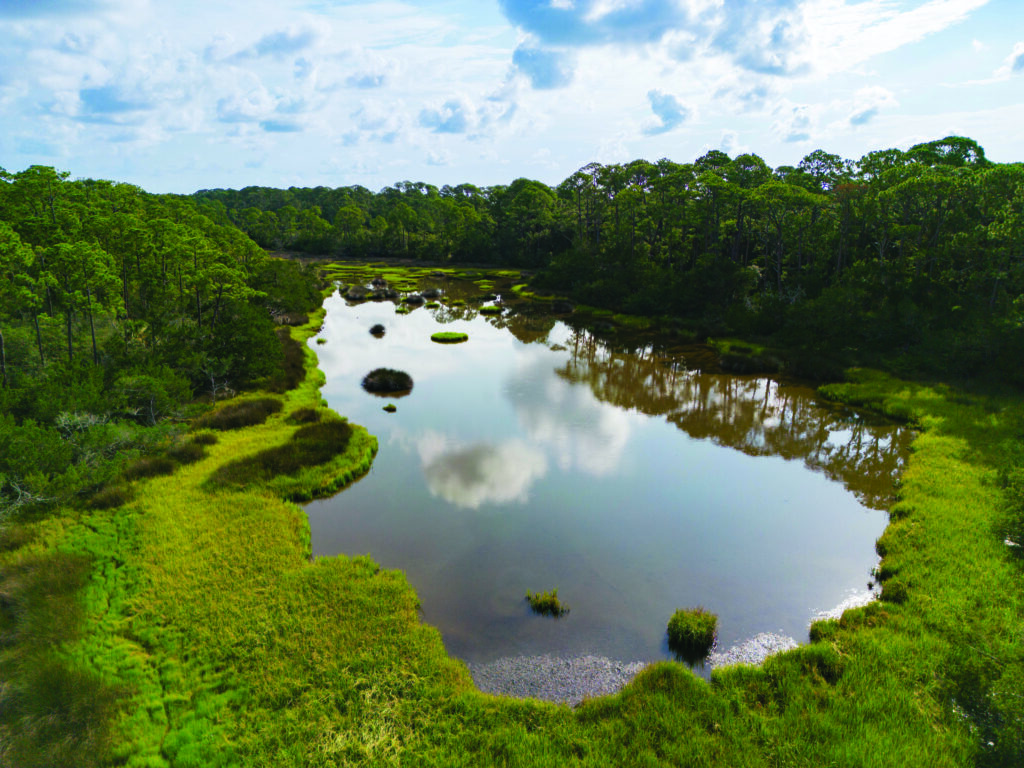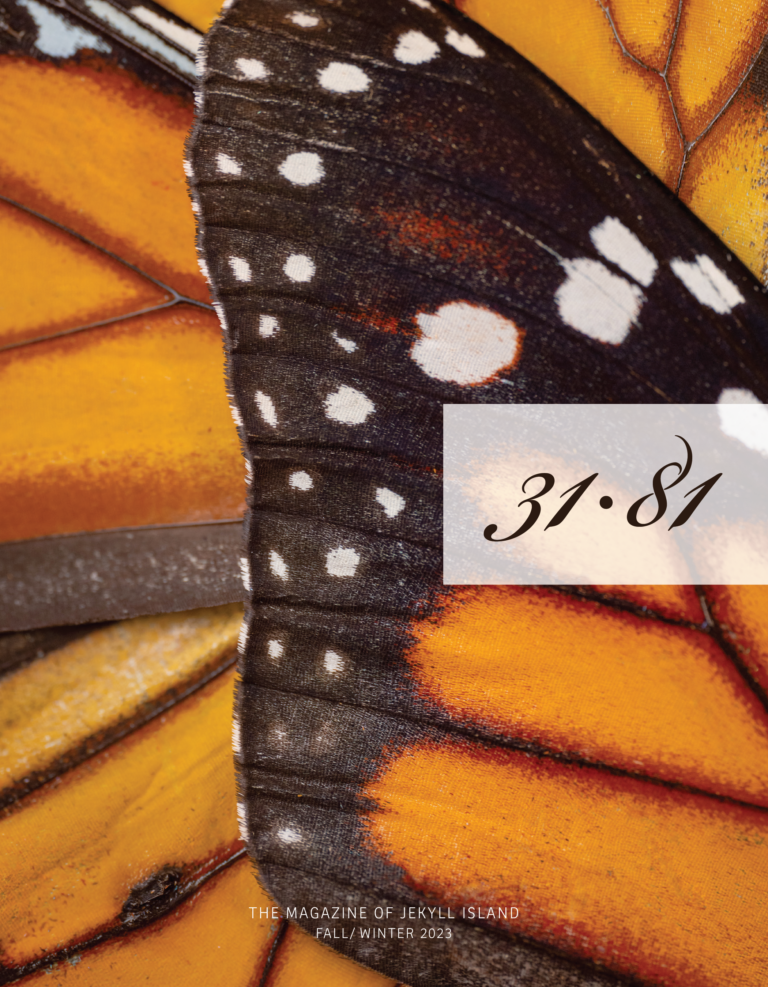What’s this about a canal in the Historic District? And pirates?
BY JOSH GREEN
Anyone who drives into the Jekyll Island Club National Historic Landmark District from the south passes through a three-way stop where Riverview Drive meets Stable Road. Beneath the intersection is a canal, which is also traversed by a nearby bridge on the popular Crane Road Trail. The canal is clearly man made, a vestige of Club-related activities from more than a century ago.
But exactly what those activities were was a mystery … until recently.
For years, Ben Carswell, the Jekyll Island Authority’s first Director of Conservation, had been working to develop restoration plans in the tidal marsh system near the Historic District. Using old aerial photos and maps, Carswell found the flow of water in and out of the marsh had been altered sometime during the island’s Club era (roughly 1879-1947). Then, a couple years ago, while searching the online archives of long-dead Atlanta newspapers, Carswell stumbled onto a blurb in the April 9, 1887 issue of The Sunny South, detailing a contract to build a canal between the Jekyll River and a pond.
The reason for the dig became clear: Once infused with brackish saltwater, the pond would serve as “just the place to plant [oysters] and make them grow and fatten,” the article reads. “The [Club] will by this means always have an abundance of these luscious bivalves always ready for use and secure from the grasp of the outside oyster gatherers.”
The members of the Club, which had been founded in 1886 as a hunt club for the wealthy, evidently demanded a bounty of fresh seafood to go with their game.
Records show the Jekyll Island Club Executive Committee authorized construction of a wooden tidal gate system in 1897, and the canal was deepened at that time to further regulate water flow.


“No one knew for sure what the Club’s objectives in installing the canal were until I stumbled on that article,” says Carswell, now a coastal liaison and a public service assistant on the faculty of the University of Georgia’s Carl Vinson Institute of Government. “So, it’s a piece of historical legacy on the landscape that visitors see frequently, and that the JIA Conservation Department has been deeply engaged with.”
Carswell’s discovery also illuminated a problem that Club members faced at the time, which the article called “outside oyster gatherers.” Andrea Marroquin, the curator at Mosaic, Jekyll Island Museum, says “oyster pirates” remained an ongoing problem despite an 1899 law intended to thwart poaching.
A letter dated January 13, 1900, from Jekyll Island Club Superintendent Ernest Grob to Frederic Baker, a Club member, sheds light on why a more secluded oyster harvesting habitat may have been crucial:
“We caught [an oyster thief] the other day and took him up to court and upon his payment of the cost of court, and his promise not to do so again, being ignorant of the law, we let him go,” Grob wrote. “But today we have another one and have sent to Brunswick for a Deputy to come down to arrest him. Whether anything can be done to them or not seems to be a question, as the law positively states that all private oyster grounds must be staked. We staked ours several years ago, but they have all rotted off and disappeared, and Judge [A.J.] Crovatt says … it is important that we stake them out again. If I remember rightly it cost us in the neighborhood of about $100 to do this. Shall I have it done again?”
The answer, presumably, was “yes.” Whether that solved the Club’s pirate problem, though, remains a mystery.


